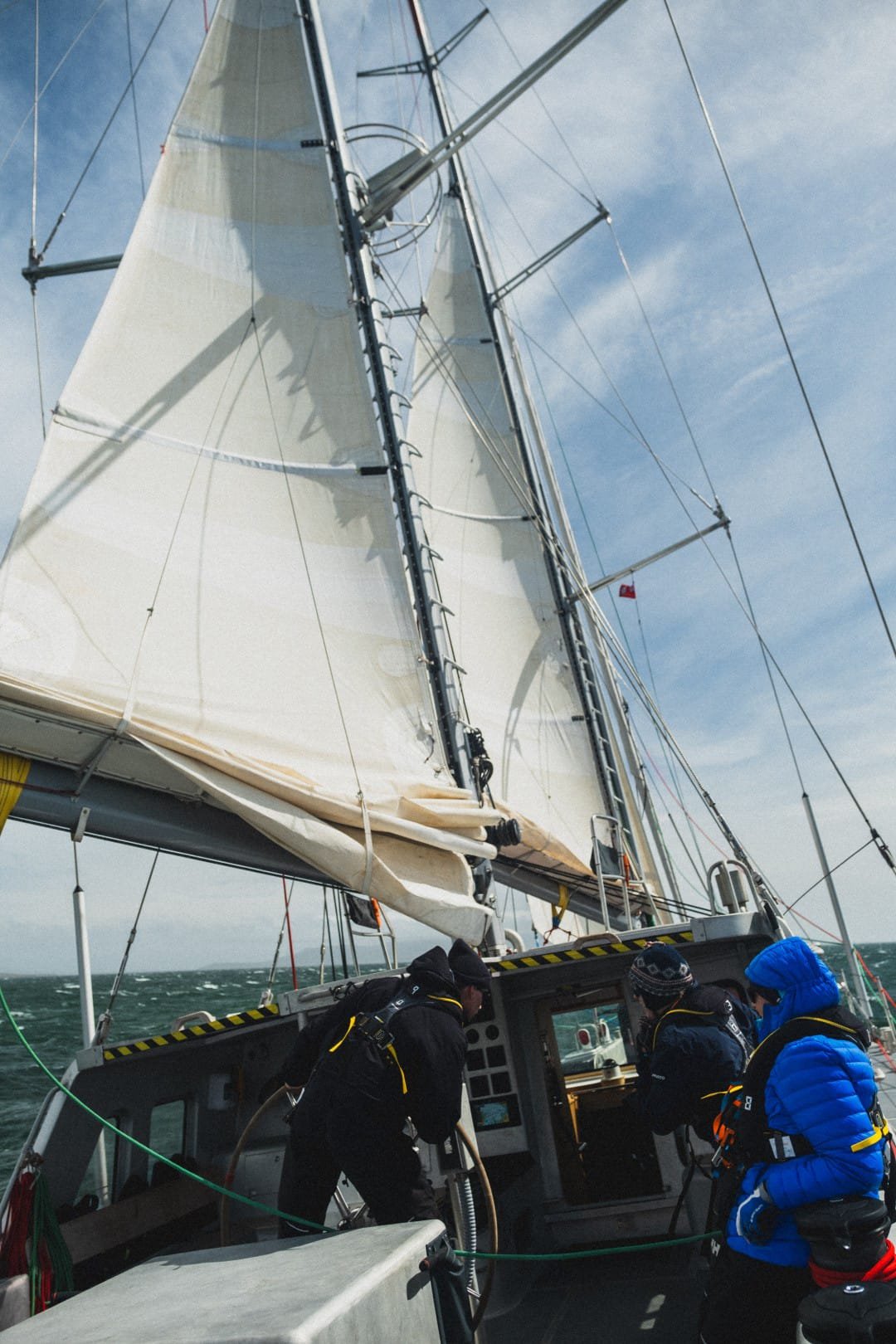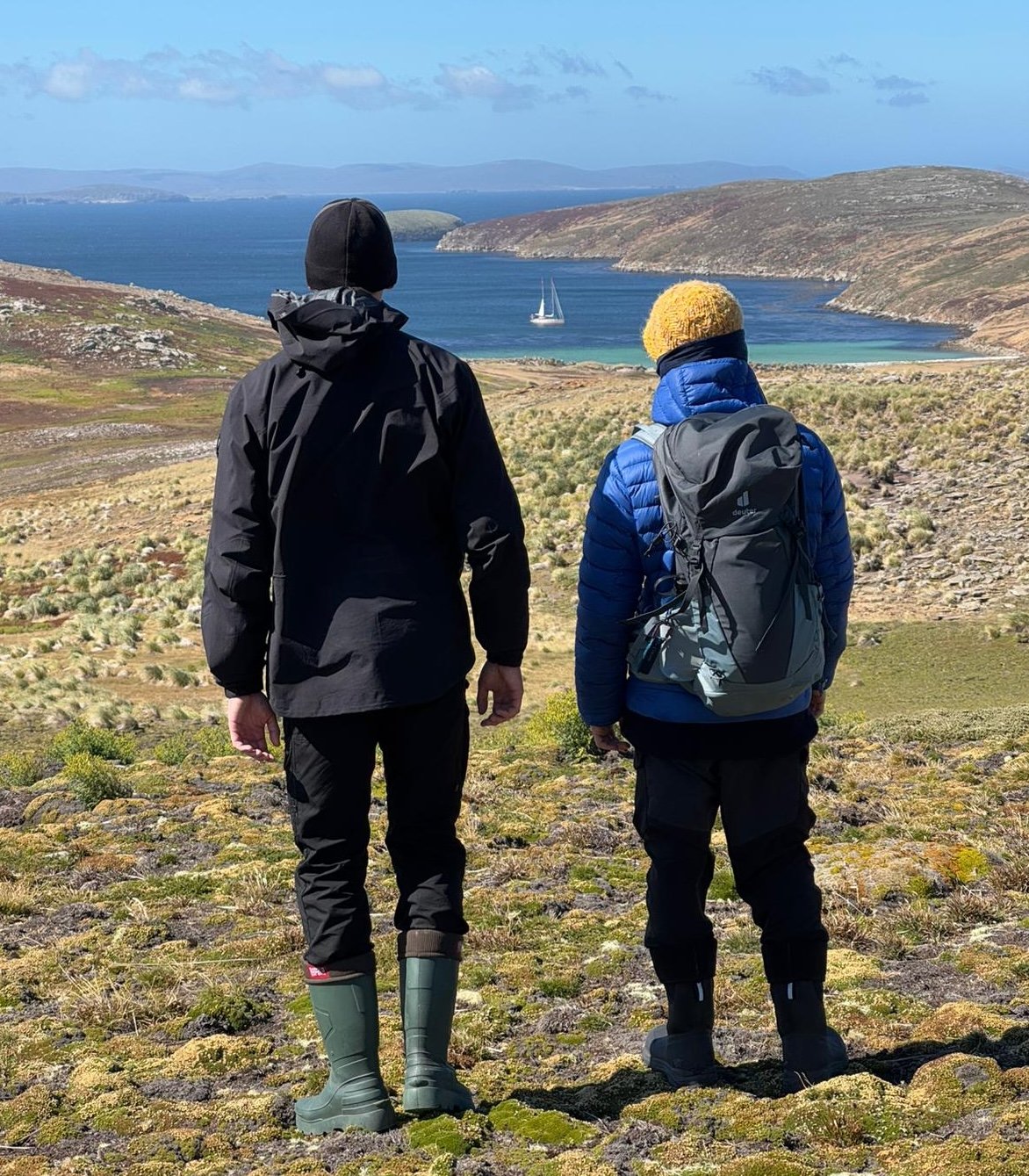RYA Competent Crew. A West Falklands Welcome
“Just how much wind is a lot of wind? Is this a normal amount of wind?” Very few Competent Crew courses have learned how to sail in a Force 8. Winds touched 40kt our first day on the water, with a 90 nautical mile overnight passage from Stanley to the West Falklands, making the most of a short weather window. “Well, technically this is a gale.”
Amundsen on mizzen's fourth and main's third reefs.
Before setting foot on Amundsen, experiencing weather at sea was left to the imagination interpreting the words of the Shipping Forecast over the BBC radio.
Competent Crew student easing the mizzen sail preventer.
In such conditions, the first thing to practice has been how to move safely about the boat, favoring the windward side, or using a tether along jacklines. Secondly, how to properly handle lines on winches, respecting the amount of load a sail can be under, and keeping one’s fingers safe.
Survival suits demonstration during the safety briefing.
The excitement of feeling the power of the sea and elements has brought everyone together with a shared sense of adventure, after taking care of each other through a first minor bout of seasickness.
Once inside the more protected islands of the West Falklands, we began practicing sail manoeuvres: hoisting main and mizzen; unfurling headsails; tacking and gybing. While Amundsen is a complicated boat to first sail, the students have excelled in developing their wind awareness and understanding points of sail, with intermittent ‘pop quizzes’ on deck.
Helming with precision, we’ve practiced sailing upwind and downwind, while weaving through small islands — noticing how much wind and current can affect Amundsen’s course over ground compared to a visual heading.
Amundsen anchored in Pebble Island.
As we change anchorage from day to day, we consider the direction and force of the wind to choose a well-protected anchorage. The wind is not only what pushes and lifts the sails; it shapes our water-landscape and determines whether we can safely dinghy to shore or not.
Touching shore in the Falklands involves particular biosecurity measures, to stop the spread of avian flu or invasive plant seeds. Our regular ritual involves dipping our boots in Virkon (stronger than bleach), and spraying down hiking poles or backpacks similarly. Dinghy rides to shore are often wet landings in the surf, and no shoes but wellies (tall rubber boots) will do out here.
And apart from learning to move around the boat, we’ve been learning to move among Magellanic penguin burrows without disrupting them; and what’s a safe distance to stand from Gentoo penguins to offer our respects while they’re molting.
Gentoo penguins and Amundsen in The Neck, Saunders Is.
Surpassing the penguins, the Falkland’s most welcoming residents are surely the Commerson’s Dolphins, who often accompany the bow of Amundsen. In the outer islands, a great pod of Sei whales greet us on all sides.
Commerson dolphins sometimes follow the dinghy in our way to the shore.
Student keeping a steady course in thirty to forty knots of wind and flat seas.
As the Competent Crew gain skills in self-sufficiency, from knot tying, to reading the water, to cooking for eight — everyone is deeply inspired by the fearless independence of the Falklanders, and their way of life so rare in the modern world. As all the islands are privately owned, we are often in conversation with the farmers, naturalists, carpenters, and sailors who live off their land with limited outside support.
Morning exploring in New Island.
For now, bowline tying and backgammon tournaments will build our confidence and morale, as we ride out another gale, and start to prepare for our passage to Punta Arenas.
Photos by Kate Schnippering, Kenneth Perdigon and Rachel Summers
Kate Schnippering
Mate










